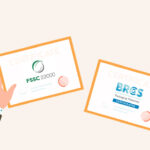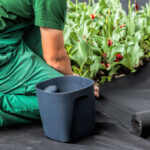Keeping our pets safe and healthy starts with the food they eat. Just like humans, pets need food that is fresh and free from harmful bacteria or contaminants. Food safety is important because it prevents illnesses and ensures our furry friends get the nutrition they need.
Pet food bags play a key role in keeping pet food safe. They are designed to protect food from air, moisture, and light, which can all cause food to spoil. Good pet food bags keep the food fresh and nutritious for a long time. By using the right kind of pet food bags, we can make sure our pets stay happy and healthy.
Importance of Food Safety in Pet Food
Food safety is crucial for pets because it keeps them healthy and provides the right nutrition. Safe pet food is free from harmful bacteria and chemicals that can cause illnesses. Pets rely on us to provide them with food that is safe to eat. When pet food is contaminated, it can lead to health problems like stomach upset, vomiting, and more severe diseases. Focusing on food safety ensures our pets enjoy their meals and stay strong and healthy.
Common Risks Associated with Improper Pet Food Storage
Improper storage of pet food can create several risks. When pet food is not stored correctly, it can become stale or moldy. Moldy food can produce toxins that are harmful to pets. Also, improper storage can attract pests like insects and rodents, contaminating the food with their droppings or bacteria. Another risk is exposure to air and moisture, which can spoil the food and make it unpalatable. Storing pet food properly can avoid these risks and keep our pets safe and healthy.
Types of Pet Food Bags Material
Pet food bags are made of various materials, each with its benefits and drawbacks. The most common materials are polypropylene, paper, and foil.
Polypropylene
Polypropylene is a type of plastic often used for pet food bags. It is durable and resistant to moisture, which helps keep the food fresh. It is also lightweight and strong, making it easy to handle and store.
- Pros: Keeps out moisture, durable, lightweight, and strong.
Paper
Paper bags are another option for pet food packaging. They are often used for dry pet foods and are more eco-friendly than plastic. Some paper bags have inner linings to provide extra protection against moisture.
- Pros: Environmentally friendly, biodegradable, and recyclable.
Each type of pet food bag material has advantages and disadvantages in terms of food safety. Choosing the right one depends on your specific needs, such as the type of pet food and how long you need it to stay fresh.
Key Features of Safe Pet Food Bags
When choosing pet food bags, it is essential to look for features that ensure the food stays fresh, safe, and nutritious. Safe pet food bags are designed to protect the food from various elements that can cause spoilage or contamination. Here are some key features to look for in pet food bags to ensure your pet’s food remains in optimal condition.
Airtight Seals to Prevent Contamination
Airtight seals are crucial for keeping pet food safe. They prevent air from getting inside the bag, which can cause the food to spoil or become contaminated with bacteria. An airtight seal keeps the food fresh and safe for your pet.
Moisture Barriers to Maintain Freshness
Moisture barriers are important in pet food bags. They keep out moisture that can make the food go bad or moldy. By blocking moisture, these barriers help the food stay dry and fresh for a longer time, ensuring your pet gets the best quality food.
UV Protection to Prevent Nutrient Degradation
UV rays from the sun can break down nutrients in pet food, making it less healthy for your pet. Pet food bags with UV protection block these harmful rays and keep the food’s nutrients intact, ensuring that your pet gets all the vitamins and minerals it needs from its food.
Odor-Proof Materials to Keep Food Aromas Inside
Pet food has strong aromas that can attract pests or make your home smell. Odor-proof materials in pet food bags lock in these smells, keeping the food’s scent inside. This prevents unwanted smells in your home and keeps pests away from the food.
These key features in pet food bags help maintain the safety and quality of the food, ensuring that your pet enjoys fresh, nutritious meals every day.
Proper Storage Practices
Storing pet food correctly is important for keeping it safe and fresh. Always keep the food in its original bag, as these bags are designed to protect the food from air, moisture, and pests. Seal the bag tightly after each use to maintain freshness and prevent contamination.
Recommended Storage Environments (Cool, Dry Places)
Pet food should be stored in a cool, dry place. High temperatures can cause the food to spoil faster, while humidity can lead to mold growth. A pantry or a cabinet is ideal for storing pet food bags. Avoid storing pet food in damp areas like basements or nearby heat-producing appliances.
Tips on How to Handle and Seal Pet Food Bags After Opening
After opening a pet food bag, squeeze out as much air as possible before sealing it. Use clips or resealable tops to ensure the bag is tightly closed. If the bag doesn’t have a resealable top, consider transferring the food to an airtight container. Always wash your hands before handling pet food to avoid introducing bacteria.
Following these storage practices can keep your pet’s food safe, fresh, and nutritious.
Tips on Choosing Sustainable Yet Safe Packaging
- Look for Recyclable Materials: Choose bags made from materials that can be easily recycled. This reduces waste and supports the recycling industry.
- Ensure Proper Sealing: The eco-friendly bag should have a strong, airtight seal to prevent contamination and spoilage.
- Verify Moisture and UV Protection: Look for bags with moisture barriers and UV protection to maintain the food’s freshness and nutrient content.
Anita Plastics: The Best Option for Pet Food Bags
Anita Plastics offers high-quality pet food bags that are both eco-friendly and safe. Their bags are designed with advanced features like airtight seals, moisture barriers, and UV protection to ensure your pet’s food stays fresh and uncontaminated. Anita Plastics uses sustainable materials, making their bags a great choice for environmentally conscious pet owners. By choosing Anita Plastics, you can be confident that you provide the best for your pet while supporting a healthier planet.
Regulatory Standards and Certifications for Pet Food Bags
In the pet food industry, the safety and quality of packaging are as crucial as the food itself. Regulatory standards and certifications are pivotal in ensuring pet food bags meet the highest safety and quality benchmarks. These standards are designed to prevent contamination, ensure proper labeling, and maintain the nutritional integrity of the pet food. Compliance with these regulations safeguards pets’ health, fosters consumer trust, ensures legal adherence, and opens up global market opportunities.
FSSC 22000 (Food Safety System Certification 22000)
This certification confirms that the manufacturing process adheres to international food safety standards. It covers the complete supply chain, from production to distribution, ensuring comprehensive safety measures are implemented.
BRCGS (Brand Reputation Compliance Global Standards)
BRCGS Packaging Materials: This certification ensures that packaging materials meet global safety, quality, and operational standards.
Compliance with BRCGS standards demonstrates a commitment to quality and safety in pet food packaging.
Importance of Choosing Products that Comply with These Standards:
Safety Assurance
- Compliance with regulatory standards and certifications ensures that the packaging materials do not introduce harmful contaminants into pet food.
- This is critical for maintaining the health and safety of pets, as contaminated food can lead to serious health issues.
Consumer Trust
- Packaging that meets recognized standards reassures consumers of the product’s safety.
- Building trust with consumers can lead to increased brand loyalty and repeat purchases.
Legal Compliance
- Adhering to regulations and standards helps manufacturers avoid legal issues and potential recalls. Non-compliance can result in fines, legal actions, and damage to the brand’s reputation.
- Staying compliant ensures smooth operations and adherence to market requirements.
Quality Control
- Standards and certifications often include stringent quality control measures. These help maintain consistent product quality, reduce the risk of defects, and ensure reliable performance.
- High-quality packaging protects the pet food, preserving its nutritional value and extending its shelf life.
Market Access
- Compliance with international standards opens up opportunities in global markets. Many countries require specific certifications for imported products, and meeting these requirements facilitates market entry.
- Expanding into new markets can drive business growth and increase revenue streams.
Sustainability and Environmental Responsibility
- Some certifications include criteria for sustainability and environmental impact. Certified packaging materials can help reduce the ecological footprint and align with consumer preferences for eco-friendly products.
- Sustainable practices can enhance the brand’s image and appeal to environmentally conscious consumers.
By understanding and adhering to these regulatory standards and certifications, manufacturers can ensure the safety and quality of their pet food packaging, build trust with consumers, and foster a positive brand reputation.
Ensuring that pet food bags comply with regulatory standards and certifications is vital for maintaining the safety and quality of pet food products. These standards protect pets’ health by preventing contamination, building consumer trust, and ensuring legal compliance. High-quality packaging that meets recognized certifications demonstrates a commitment to safety, quality, and sustainability. For manufacturers, adherence to these standards opens up opportunities in global markets and fosters brand loyalty.
Frequently Asked Questions(FAQ)
What are dog food bags made of?
Dog food bags are typically made from multi-layer materials like paper, plastic, or a combination of both. Some also use polypropylene, which is durable and moisture-resistant, keeping the food fresh. These materials help protect the food from moisture, air, and pests.
Is polypropylene safe for dogs?
Yes, polypropylene is generally safe for dogs. It is a non-toxic, durable plastic often used in pet products like toys, beds, and food containers. Just make sure the items are free from sharp edges or parts that could be chewed off and swallowed.




